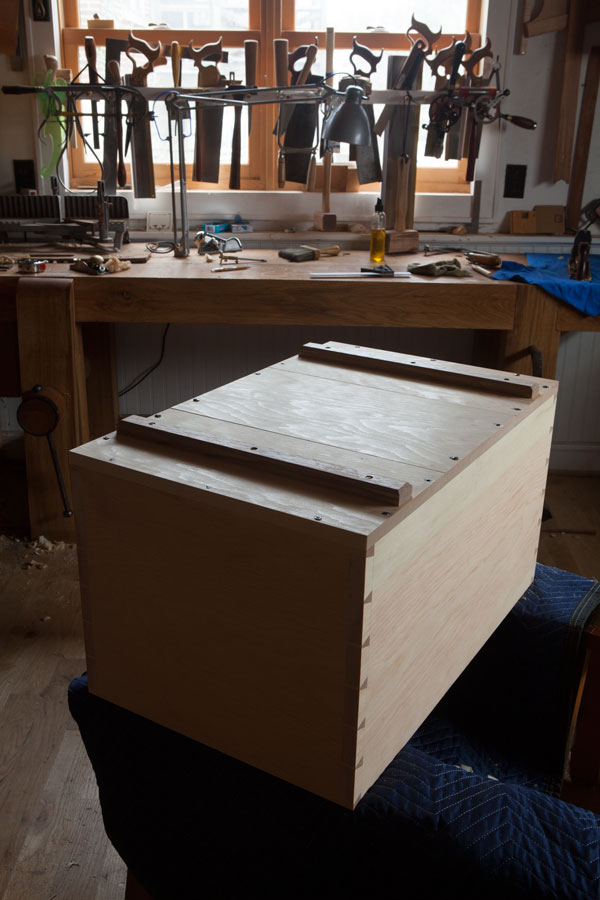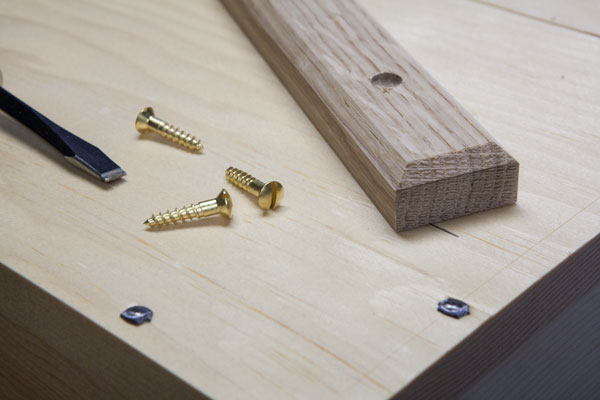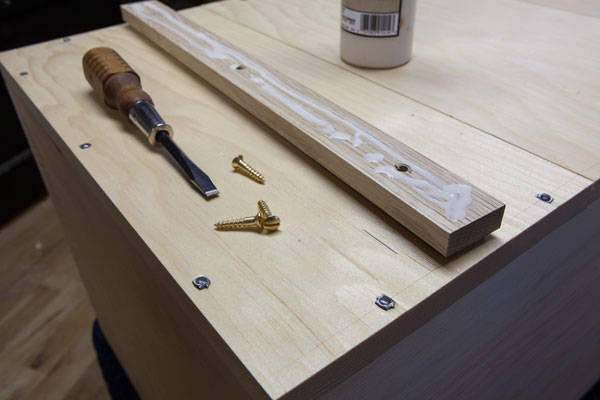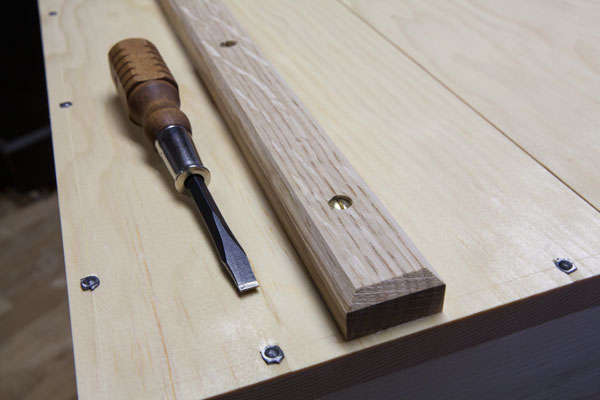When Your Tool Chest Needs to Be a Tank (or a Boat)
When tool chests suffer damage, it’s usually in three places: the top rim of the lid, the lower skirt around the carcase and the bottom boards, which are rotted.
The rim of the lid gets dented by falling objects, such as clamps, heavy boards and other things in the truck when you move the chest. The lower skirt gets rammed by other shop stuff, including rolling machinery, work boots, rough boards and who knows what else.
The bottom gets rotted by moist negligence.
Shops can be wet places, historically. Even a simple spill in the shop can start the process – many woods absorb and hold water, just like when they were a tree. And if your chest sits on concrete, water can migrate from the concrete to the wood. I’ve seen this happen.
Even if the bottom doesn’t rot out, if the bottom boards are wet, then you have created a terrarium for rust. That’s why many chests are protected by what I call “rot strips,” which are disposable bits of lumber affixed to the underside of the chest. (Casters can serve the same function.)
The tool chests I’ve built for myself and customers might not see moisture in their lifetime, but they should be built for a 200-year journey if possible. There are lots of ways to do this; here’s what I do.
I make the rot strips from a tough and water-resistant species, such as teak, white oak or whatever else is in the shop. They are 3/4” x 1-1/2” wide. I plane a 3/16” x 3/16” chamfer all around the bottom edge to make the chest easy to drag on the floor. Thanks to the chamfer, the chest will ride over bumps in the floor or sills.
I attach the rot strips to the chest using a waterproof glue and brass screws, which will hold tight during a soaking. It also serves as a barrier to moisture. After the chest is painted, I finish the rot strips with boiled linseed oil and beeswax to prevent water from penetrating for awhile.
This sort of construction will keep the rot strips in place for a long time and prevent water from soaking into the bottom boards of the chest.
If I don’t have the above materials handy, I take a different strategy. I make the rot strips from pine and affix them with iron nails. If the rot strips or nails are ever exposed to a significant amount of water, then the rot strips will fall off and beg to be replaced.
Either strategy works.
— Christopher Schwarz




No comments:
Post a Comment